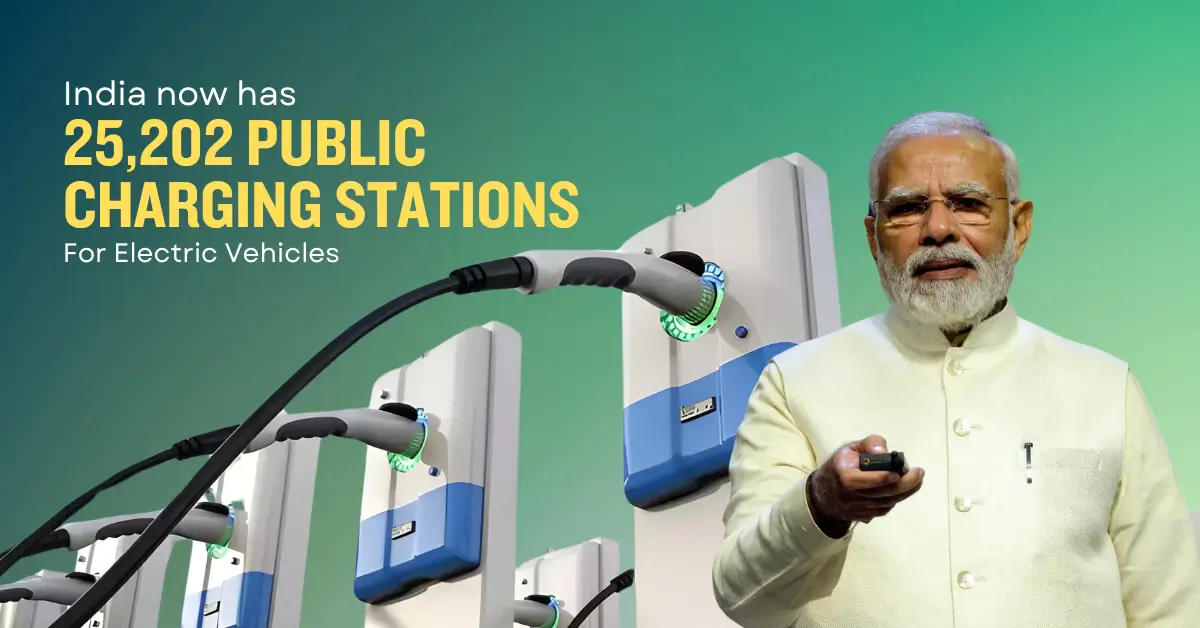

 India is advancing swiftly toward a sustainable transportation future, with the Ministry of Heavy Industries (MHI) leading efforts to promote electric vehicles (EVs).
India is advancing swiftly toward a sustainable transportation future, with the Ministry of Heavy Industries (MHI) leading efforts to promote electric vehicles (EVs).
On September 29, 2024, the government launched the PM Electric Drive Revolution in Innovative Vehicle Enhancement (PM E-DRIVE) scheme.
This comprehensive program is designed to encourage EV adoption, develop charging infrastructure, and foster an ecosystem conducive to EV manufacturing.
With a budget allocation of ₹10,900 crore over two years, the initiative aims to position India as a key player in the global EV market. The scheme shall be implemented from 1st Oct 2024 to 31st March 2026.
Out of this, ₹2,000 crore is reserved specifically for setting up public charging stations.
Here are some key details of the PM E- Drive Scheme:
Guidelines for EV Charging Infrastructure
The Ministry of Power (MoP) has also stepped up to establish a robust EV charging framework. On September 17, 2024, the MoP issued the “Guidelines for Installation and Operation of Electric Vehicle Charging Infrastructure-2024.”
These guidelines outline standards and protocols to ensure an interoperable and connected network of charging points across the country. By implementing these measures, the government seeks to standardize the process of setting up EV charging facilities and enhance user convenience.
Presently, the country boasts a total of 25,202 public EV charging stations (EVPCS), distributed across states and Union Territories, as per data provided by the Ministry of Power.
Regional EV Charging Station Distribution Across India
EV charging stations are unevenly distributed across states, reflecting varied adoption levels. Karnataka leads with 5,765 EVPCS, followed by Maharashtra with 3,728 and Uttar Pradesh with 1,989. Delhi, Tamil Nadu, and Kerala also show significant infrastructure development, contributing over 1,000 charging points each.
On the other end of the spectrum, smaller states and Union Territories such as Lakshadweep, Sikkim, and Andaman & Nicobar Islands have fewer than five stations. This diversity in infrastructure underscores the need for targeted efforts to ensure equitable EV adoption across regions.
District-wise Overview
Chhattisgarh, though smaller in numbers, contributes with 271 EVPCS, distributed across districts such as Raipur (57), Bilaspur (28), and Rajnandgaon (24).
Other regions, including Durg, Surguja, and Korba, have moderate installations, while smaller districts like Bijapur and Gariyaband host minimal facilities.
The uneven distribution reflects varying demand and urbanization levels, indicating room for further growth in EV infrastructure within the state.
NITI Aayog’s Perspective
According to NITI Aayog, determining the ideal number of charging stations is influenced by several evolving factors, including the type of EVs, their usage patterns, geographic conditions, urban layouts, and technological advancements in EVs and charging equipment.
As these factors are constantly changing, there is no universally agreed benchmark for the number of chargers required for a specific EV population. This dynamic environment calls for adaptive strategies to meet future needs effectively.
Government’s Vision for a Sustainable EV Ecosystem
The Minister of State for Heavy Industries and Steel, Shri Bhupathiraju Srinivasa Varma, emphasized these developments in his recent address to the Rajya Sabha.
By focusing on infrastructure development and policy support, the government aims to create a cohesive ecosystem for EV adoption. This vision aligns with India’s larger goals of reducing emissions, decreasing dependence on fossil fuels, and achieving sustainable mobility solutions.
According to Vahan Data EV Registrations saw a significant 23% increase [year on year].
Final Thoughts
With a multi-pronged approach encompassing infrastructure development, policy frameworks, and financial support, India is paving the way for a significant transformation in its transportation landscape.
As the EV ecosystem continues to evolve, these efforts will play a critical role in achieving widespread adoption and ensuring a sustainable future for all.